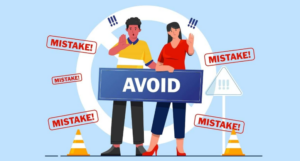Geography tutoring today can’t just be about memorising maps and definitions. Students need to analyse data, interpret real-world issues, and think critically to ace DRQs and essays. For tutors, this means moving beyond traditional methods and adopting strategies that spark curiosity and build lasting skills.
From gamified learning to virtual field trips, the right techniques can transform lessons into powerful, exam-ready experiences. In this guide, we’ll explore innovative teaching methods every Geography tutor should use to engage students, boost performance, and future-proof their teaching approach.
The Shift in Geography Learning

Geography has changed a lot from what it used to be. Gone are the days when students could simply memorise terms and scrape by. Today’s examiners expect analysis, application, and clear thinking — and that means tutors need to teach differently.
Here’s how this shift looks in practice:
- Less memorisation, more problem-solving
- Skills-based learning over content dumping
- Real-world context driving engagement
If you’re still teaching like it’s 2010, you’ll lose your students’ attention fast. The good news? Once you adapt, their results (and confidence) can skyrocket.
Turning Memorisation Into Real-World Problem Solving
If you’ve ever seen a student stare blankly at a stack of notes, you’ll know why old-school memorisation just doesn’t cut it anymore. Geography isn’t about parroting definitions — it’s about applying what you know.
Instead of cramming, students now need to tackle real-world problems like rising sea levels or urban congestion. When tutors frame lessons around these issues, it gives purpose to the subject. Suddenly, Geography stops being “just another subject” and starts feeling practical, even exciting.
The best part? Once students see how concepts play out in the real world, they retain the knowledge naturally — no painful drilling required.
Building Map Skills, Data Literacy, and Critical Thinking
Ask any examiner what separates an A1 student from the rest, and they’ll tell you: it’s skills, not facts. Strong map-reading skills, data interpretation, and the ability to craft logical arguments are what get students across the finish line.
A tutor’s role is to train students to think like geographers, not just study like them. That means:
- Analysing population density maps
- Breaking down climate graphs
- Debating why certain patterns exist
When students develop these skills, they don’t just ace their exams. They walk away with the confidence to tackle any new question thrown at them — and that’s what truly sets them apart.
Core Teaching Principles

Every effective Geography tutor follows a few timeless principles — not because they’re trendy, but because they actually work. These principles turn passive note-taking into lessons students look forward to.
Think of them as the foundation for every successful tutoring session:
- Engage students actively
- Keep content relevant
- Personalise your approach
Get these right, and everything else you do will have twice the impact.
Make Every Lesson Interactive and Student-Led
If you’re talking more than your student, you’re doing it wrong. Students learn best when they’re the ones asking questions, solving problems, and explaining concepts back to you.
Try simple shifts like:
- Turning explanations into mini Q&A sessions
- Using quick map challenges during lessons
- Asking students to “teach back” a concept in their own words
These small tweaks push them to think harder and build ownership over their learning.
Connect Concepts to Current Events That Matter
Geography comes alive when it’s linked to the real world. Instead of abstract examples, tie lessons to things students actually see on the news or social media.
You could use:
- Singapore’s urban heat island effect
- Global shipping routes and how they impact local trade
- Recent flooding events and their geographical causes
When students see Geography in action, it stops feeling like a textbook subject and starts feeling relevant to their lives.
Adapt Your Approach to Every Learning Style
No two students learn the same way. Some need visuals, some prefer discussions, and others thrive with step-by-step breakdowns.
A good tutor doesn’t force one method. Instead, you switch gears:
- Use diagrams for visual learners
- Simplify processes for step-by-step thinkers
- Encourage debates for those who love discussion
When you meet students where they are, you make the subject accessible — and their confidence soars.
Innovative Methods Tutors Should Use

If you want students to stop zoning out during lessons, you can’t keep teaching the same way their school does. The best tutors go beyond worksheets and inject methods that make Geography engaging, practical, and even fun.
Here’s how to turn dull tutoring sessions into something students actually look forward to:
Use Gamified Learning to Keep Students Engaged
Nobody enjoys endless note-copying, but a quick quiz battle or map challenge? That’s different. Gamified learning adds a competitive edge that makes revision feel less like work.
Try:
- Timed “map races” to locate countries or physical features
- Online quiz platforms with leaderboards
- Reward systems for consistent progress
Even small games can transform the energy of a session — and yes, it works for teens who “hate” Geography too.
Bring Geography to Life with Project-Based Tasks
Students remember what they do, not just what they hear. Project-based tasks let them explore real-world issues while building exam skills.
Examples include:
- Researching Singapore’s water management strategies
- Analysing how climate change impacts local communities
- Creating a mini-report on urban development trends
Projects don’t just prepare students for DRQs and essays — they give them stories they can actually connect to.
Flip the Classroom to Maximise Lesson Time
Instead of spending tuition sessions spoon-feeding content, give students short readings or videos to review before class. Then, use your time together for practice and discussion.
This “flipped” approach means:
- Less passive note-taking
- More targeted feedback
- A faster path to exam-ready confidence
It’s like turning tuition into a workshop instead of another boring lecture.
Train Students to Question and Think Like Examiners
A top Geography student isn’t just knowledgeable — they think strategically. Tutors should teach students how examiners mark, so they learn to structure answers that score.
Key steps:
- Break down past-year questions together
- Highlight command words (e.g. “evaluate” vs. “describe”)
- Practise writing concise, well-supported points
Once students start “thinking like examiners,” their answers instantly become sharper and more precise.
Harness Visual Tools to Simplify Complex Ideas
Geography is a visual subject — maps, diagrams, and graphs are its language. Using tools like Google Earth, GIS software, or simple sketch maps can turn abstract concepts into something crystal-clear.
When students see what they’re learning, it clicks faster, and you waste less time re-explaining the same topic.
Leveraging Technology
The right tools can make Geography tutoring feel less like a classroom and more like an interactive experience. When you use technology wisely, you don’t just teach faster — you teach better.
Turn Whiteboards into Dynamic Mapping Tools
Gone are the days of static diagrams. With digital whiteboards, you can:
- Annotate maps in real-time
- Highlight key features with colours and layers
- Save and revisit diagrams for future lessons
This keeps lessons visual, interactive, and far more engaging than a regular pen-and-paper approach.
Run Virtual Field Trips Without Leaving the Room
Students may not always get to climb mountains or visit coastal sites, but technology can take them there virtually. Tools like Google Earth or 360° videos allow you to:
- Explore cities and landscapes
- Analyse terrain and land use
- Connect textbook concepts with actual locations
It’s the next best thing to hopping on a bus for a field trip.
Track Progress with Smart Analytics
Instead of guessing how a student is doing, you can track it. Online quiz platforms and digital tools offer:
- Instant feedback on weak topics
- Performance trends over time
- Data to guide your next lesson plan
When students see their progress, it boosts confidence — and keeps them motivated to improve.
Avoiding Common Mistakes

Even the best tutors sometimes fall into habits that hurt more than they help. The good news? Fixing these mistakes can instantly make your lessons more effective and enjoyable for students.
Stop Overloading Students with Empty Facts
Throwing pages of notes at your student might feel “thorough,” but it usually backfires. Students don’t need more content; they need clarity.
Focus on:
- Key exam-relevant concepts
- Breaking down complex topics into simple steps
- Teaching how to apply information, not just memorise it
When you cut the noise, students stop cramming and start learning.
Use Case Studies to Make Lessons Stick
Geography comes alive through examples. A student will forget a definition, but they’ll remember how Jakarta’s flooding or Singapore’s water policies illustrate that concept in action.
Make it a habit to:
- Link every topic to a real-world case
- Encourage students to explain how it connects to the syllabus
- Revisit key examples until they can apply them in essays and DRQs
Case studies don’t just make lessons memorable — they make answers exam-ready.
Measuring Results

Great tutoring isn’t just about delivering lessons — it’s about proving they work. Tracking progress the right way helps tutors stay effective and gives students the confidence that they’re improving.
Track Exam-Focused Skills, Not Just Homework
Marking homework is fine, but it’s not enough. What really matters is whether a student can:
- Analyse DRQs under timed conditions
- Write clear, well-structured essays
- Apply case studies without prompting
Focusing on these exam-based skills shows you (and them) if your methods are actually paying off.
Use Feedback Loops to Refine Your Teaching
Every student learns differently. That’s why the best tutors regularly ask for feedback — what’s working, what’s not, and where they need more support.
This can be as simple as:
- A quick check-in at the end of each lesson
- Tracking which techniques improve results fastest
- Adjusting your approach based on real data
When you treat feedback like a two-way street, your teaching evolves — and so do your students’ grades.
Action Plan for Tutors

Innovative teaching doesn’t happen overnight. The key is to start simple, build confidence, and scale what actually works for you and your students.
Start Small, Test, and Scale What Works
You don’t need to overhaul your entire tutoring style in one go. Pick one method — maybe gamified quizzes or flipped lessons — and try it out.
Then:
- Watch how your students respond
- Refine it based on results
- Add more strategies gradually
This way, you avoid overwhelm and build a teaching toolkit that genuinely delivers results.
Conclusion: Future-Proofing Geography Tuition

Geography tutoring is no longer about drilling facts — it’s about equipping students with skills that last well beyond the exam hall. When tutors embrace innovative methods, from gamified learning to feedback-driven teaching, lessons become more engaging, effective, and enjoyable for everyone.
Start small, keep adapting, and focus on what truly helps students think like geographers. Do that, and you won’t just prepare them for A1s — you’ll prepare them for the real world.

